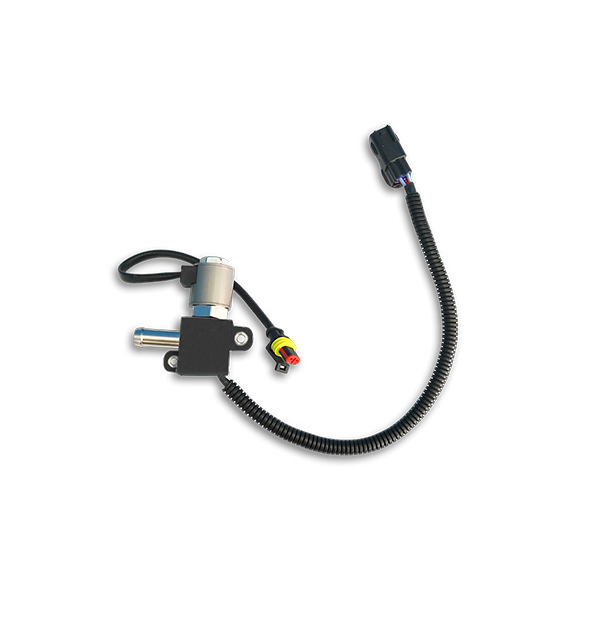Common Faults and Solutions of Drain Valves
I. Leakage Issues
Seal Failure
Symptom: Liquid/gas leakage at valve body joints or spool seats.
Causes:
Wear of O-rings/NBR seals due to high temperature or corrosion (e.g., NBR seals aging above 100°C).
Scratches on the spool or seat surface from impurities (particle size >5μm).
Solutions:
Replace seals with materials compatible with the medium (e.g., PTFE for corrosive fluids, silicone for food-grade applications).
Polish the spool and seat (surface roughness Ra ≤0.8μm) and install a 10-20μm upstream filter.
Threaded Joint Leakage
Symptom: Leakage at threaded connections during pressure testing.
Causes: Inadequate thread engagement, damaged threads, or improper sealant application.
Solutions:
Apply PTFE tape or anaerobic sealant (e.g., Loctite 567) with 2-3 layers, ensuring 6-8 threads are engaged.
Replace damaged threads or use flanged connections for high-pressure systems (≥10MPa).
II. Valve Failure to Open/Close
Mechanical Jamming
Symptom: The valve cannot be opened/closed manually or electrically, with abnormal noise during operation.
Causes:
Sediment accumulation (e.g., rust, scale) in the valve body, jamming the spool.
Deformation of the valve stem due to excessive torque (e.g., over-tightening during installation).
Solutions:
Disassemble and clean the valve body, using ultrasonic cleaning for stubborn deposits.
Install a strainer upstream and use torque wrenches to tighten stems within specified limits (e.g., 15-20N·m for DN20 valves).
Electromagnetic Actuator Failure
Symptom: Electric drain valves show no response to control signals, with heated coils.
Causes: Coil burnout (open circuit), broken wires, or stuck armature cores.
Solutions:
Test coil resistance with a multimeter (should match the nominal value, e.g., 24V DC coil resistance ~50Ω).
Replace damaged coils and check for foreign objects in the armature cavity (e.g., iron filings).
III. Abnormal Noise and Vibration
Cavitation Noise
Symptom: High-pitch buzzing during valve operation, with visible bubbles in the medium.
Causes: Excessive pressure drop (ΔP >3MPa), leading to liquid vaporization and collapse.
Solutions:
Install a pressure relief valve at the outlet to maintain ΔP ≤2MPa.

Use valves with anti-cavitation trim (e.g., multi-stage pressure reduction cages).
Flow-Induced Vibration
Symptom: Pipeline vibration and rattling sounds during valve opening.
Causes: Unstable flow due to improper valve sizing (e.g., oversized valve causing low flow velocity).
Solutions:
Reselect the valve with a suitable Cv value (flow coefficient) to maintain optimal velocity (1-3m/s for liquids).
Install vibration dampers or rigid supports on pipelines (spacing ≤1.5m for DN50 pipes).
IV. Control Inaccuracy (for Proportional Drain Valves)
Signal Transmission Error
Symptom: The valve opening does not match the control signal (e.g., 4-20mA signal corresponds to inconsistent flow).
Causes: Electromagnetic interference (EMI), loose wiring, or sensor calibration drift.
Solutions:
Use shielded cables (e.g., RVVP 4×0.75mm²) and ground the shield at the control cabinet.
Re-calibrate the valve with a pressure/flow meter, adjusting the PID parameters (e.g., proportional band ≤5%).
Slow Response
Symptom: Delayed valve opening/closing (response time >10s for electric valves).
Causes: Worn seals increasing friction, or insufficient pilot pressure (for pneumatic valves).
Solutions:
Replace seals and apply silicone-based lubricant (e.g., Dow Corning 111) to moving parts.
Check and maintain pilot pressure within the specified range (e.g., 0.4-0.7MPa for pneumatic actuators).
V. Corrosion and Material Degradation
Medium-Induced Corrosion
Symptom: Pitting or rust on the valve body, with reduced sealing performance.
Causes: Incompatible material with the medium (e.g., carbon steel valves in acidic environments).
Solutions:
Replace with corrosion-resistant materials (316L stainless steel for acids, Hastelloy for strong alkalis).
Apply anti-corrosion coatings (e.g., zinc-nickel plating, thickness ≥15μm) for coastal or chemical plant applications.
Hydrogen Embrittlement (for Hydrogen Systems)
Symptom: Cracking of valve components under low stress, with no visible corrosion.
Causes: Hydrogen diffusion into metal lattices, reducing ductility (common in carbon steel at high pressure).
Solutions:
Use hydrogen-resistant materials (316L stainless steel, compliance with ISO 15848-1).
Avoid cold working of components and perform stress relief annealing (e.g., 650°C for 2 hours).
